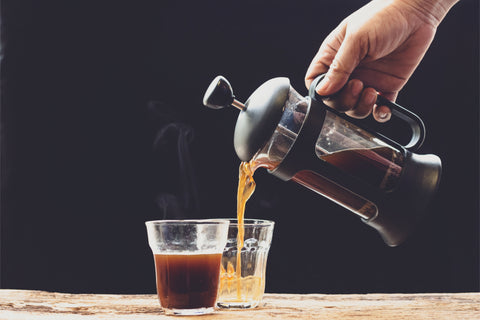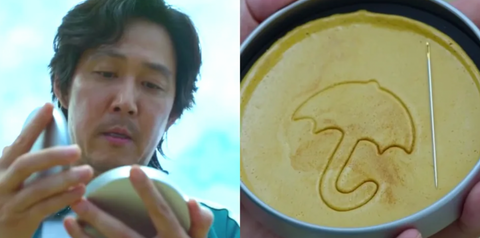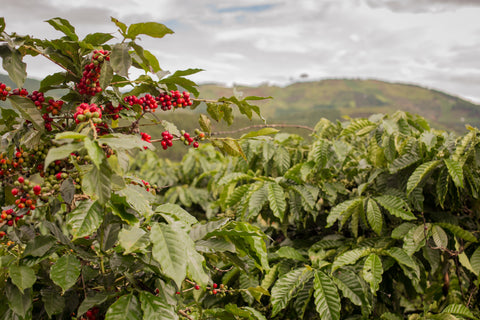Pressed to perfection
Few brewing vessels have that eye-catching, chic, je ne sais quoi that the French Press seems to possess. Not only is the French Press one of the most striking brewing devices on the market but it is also one of the best ways to brew yourself an exceptionally rich, silky, vibrant, and delectable cup of coffee. Let’s find out a bit more about this superb brewing device.
The origins of the French Press (it just might surprise you!)
There appears to be some debate as to whether the original French Press design came from France or from Italy. Though the earliest design of the brewing vessel we now know today as the French Press came from two French nationals, monsieurs Mayer and Delforge, in 1852 their design seems to have had a bit of a flaw. The interior of the coffee carafe did not have a seal and thus their design did not take off in the same way some later innovations would.
This would occur later in 1928. Two Italian designers decided to patent a new and improved take on this interesting coffee brewing vessel. Attilio Calimani and Giulio Moneta came up with this next improved design based on the ideas of another Italian, Ugo Paolini. This new style of piston coffee device featured the filter press that many can recognize today as a key feature of the modern French Press. Calimani and Moneta's press system allowed for filtration of coffee liquid away from the grounds and formed a tighter seal inside of the interior vessel of the press.
But the next evolutionary step for the French Press came once again, but this time by the Swiss designer, Faliero Bondanini. Bondanini got his patent for the brewing vessel approved in 1958 and proceeded to produce said vessels in a French clarinet factory of all places. The name? Melior, which is still today a variant name for the French Press brewing device (more on alternative names later!). Between the French designers from 1865, all the way up to Bondanini’s patent in the ’50s, the French press had its design embellished, enhanced, streamlined, modified, altered, changed, renamed, refurbished, and everything in between by a whole cadre of French, Italian, and Swiss designers.
To further stir the pot in regards to this brewing devices’ identity, it also just so happens to go by several different names depending on the country one is in. In the United States and Canada, it is a French Press or also a coffee press. Meanwhile, cafetiere is the name of choice in Britain and Ireland. In Australia, New Zealand, and South Africa the press is known as the coffee plunger. In France and Italy, the press is also known by different names. Italians will call it a caffettiera con stantuffo and their French counterparts may know it better as a cafetiere a piston. The German-speaking world calls it a kaffeepresse or a stempelkanne. Some folks may also refer to the French Press as a Melior or a Bodum. These two last names are the names of two different companies that produce French presses today.
Whatever the name may be or whichever nation came up with it first the French Press is a truly enigmatic brewing vessel. But what exactly is it?
To put it simply a French press is a glass or stainless steel cylinder with a piston or pump that includes a stainless steel mesh and wire. A French Press will have a cap that will make for ease in pouring one's coffee once it has been fully brewed.
The device works like this; the grounds go in the base of the cylinder and when the hot water goes in, the plunger with its filter pushes down and uses pressure and its mesh to push the grounds down while letting the water filter through. The body cylinder is filled with coffee after it has been immersed with the grounds and when you pour it, the filter keeps the grounds out of your brewed coffee! The result? A thick, silky, rich, aromatic, powerful, and vivacious cup of coffee. Unlike one you may have experienced before! Let’s see how to brew it in a bit more detail.
What you will need
- Kettle
- Timer (optional)
- Whole coffee beans of choice
- Scale (optional)
- Grinder
- Purified or filtered water
- French Press
- Spoon (optional but optimal)
First, measure and grind your beans. You will ideally want to go for a coarse grind. Anything smaller may leave you with a silty coffee brew. In regards to beans, feel free to experiment but a light roasted bean is good to start off with. Single origins are great because the French Press will really highlight what that origin place has to offer in regards to aroma, terroir, mouthfeel, hints, and notes. For example, a lightly roasted Colombian Huila would work really nicely and display a lot of its exceptional flavor and aroma palette in all its glory. In regards to ratios, a good starting place would be 3 tablespoons of coffee beans to one cup of water.
Once you have your grounds, place them at the base of your French Press. Boil your water.
Now that the water has boiled wait about 30 seconds so the water is not too scalding and fill your press about halfway with water. Use your spoon to stir your grounds to make sure they are completely wet and submerged.
Place your top component on, but do not press the plunger down just yet! Instead set your timer for 4 minutes or watch a clock or your phone.
After about 4 minutes press your plunger down all the way. Once pressed, you can enjoy your fantastic brew! Try not to let it steep for too long or your brew may become over-extracted and become bitter. But otherwise, you will be treated to a superb cup of coffee that will most likely become your new favorite pick-me-up.
Tres Magnifique!
Though its nation of origin may be dubious, the French Press's ability to brew amazing coffee certainly is not! Choose a French Press if you want an artisanal cup of coffee made by the best barista in the world, you! French Press is the key to enjoying everything a bean has to offer and will produce thick, rich, and satisfying cups of coffee all day, every day.
Sources:
- Education, et al. “The History of French Press.” European Coffee Trip, 22 Mar. 2018, https://europeancoffeetrip.com/the-history-of-french-press/.
- Handground, Team. “How to Use a French Press: Tools, Ratios, and Step-by-Step Guide.” RSS, Handground, 30 Sept. 2018, https://handground.com/grind/how-to-use-a-french-press.
- Solano, Fabiola. “French Press - The History & Brewing Guide.” Perfect Daily Grind, Perfect Daily Grind, 6 Mar. 2021, https://perfectdailygrind.com/2015/05/french-press-the-history-brewing-guide/#:~:text=The%20french%20press%20is%20a,and%20also%20fewer%20coffee%20particles.



